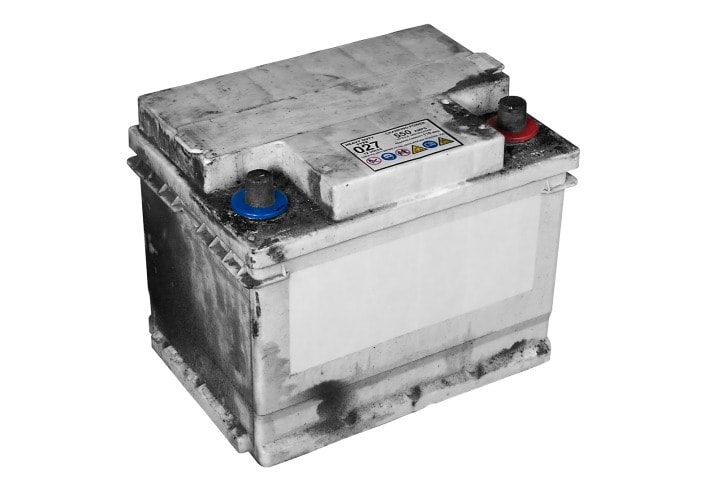Most people wait until their car battery dies before they decide to replace it, a recent report revealed. The survey of 1,000 drivers, sponsored by Batteries Plus Bulbs, showed that 53 percent of the group waited until they were stranded by a dead battery and then had to call for roadside assistance.
"We get a lot of calls for dead batteries," says Steve Mazor, chief automotive engineer with the Automobile Club of Southern California. "It always seems to be at the most inopportune time and place."
While the battery is a simple, relatively inexpensive device, it is essential. If it doesn't work, you aren't going anywhere. So it pays to check your battery regularly and replace it before it dies.
A car's 12-volt battery stores electricity used to briefly turn the car's engine until it starts and runs. Then, the engine's power turns the alternator, which generates electricity to recharge the battery so it can start the car again next time. The battery and alternator are part of the car's electrical system, working together to power the headlights, radio, horn and other electrical devices.
The cost of a battery for most new cars ranges from about $75-$200, although batteries for some cars equipped with the "stop-start" feature (which shuts the engine off when the car is stationary in order to save fuel) would be much more, Mazor says.
Here are the five things that will help you avoid a dead battery:
1. Know Your Car Battery's Age: Most cars require 12-volt batteries that last from three to five years. Therefore, you should know how old the battery is so you can replace it before it fails. Hopefully, you kept the receipt or noted the date when you bought your current battery. Or, perhaps you bought your car new so the battery was also new at that time. But if you are like many people, they bought a car without knowing the age of the battery. Well, it's time to find how old it is now.
Open your car's hood and locate your battery, which is usually in the right front of the engine compartment. In some cases, the manufacturer places an easy-to-remove plastic cover over the battery. If you're lucky, you will see a simple circular sticker on the battery with the date in this format: "9/13," meaning September, 2013. However, other batteries should have a plastic strip with a code on it. Here is a chart to decipher battery codes.
If the battery has no date code, you are forced to judge the battery by its general appearance. If it appears old and has white corrosion around the terminals, you will definitely want to get it tested (see No. 3 below).
2. Look for the Warning Signs of a Dying Battery: You might notice that when you turn the ignition key, the engine cranks slowly. This could be a sign that your battery is about to die, Mazor says. Another telltale sign is to turn on the headlights when the engine isn't running, he says. If the headlights look dim, the battery could be on its last legs.
In some cases, a battery will die without any warning at all. If your car won't even turn over (there might be a clicking or buzzing sound coming from the electrical system), check first to see if the battery was drained because you left the lights on, or some other electrical device. Once the car is jump started, it could start, run and seem reliable. But the battery will probably fail again shortly, so replace it as soon as possible.


 by
by 
